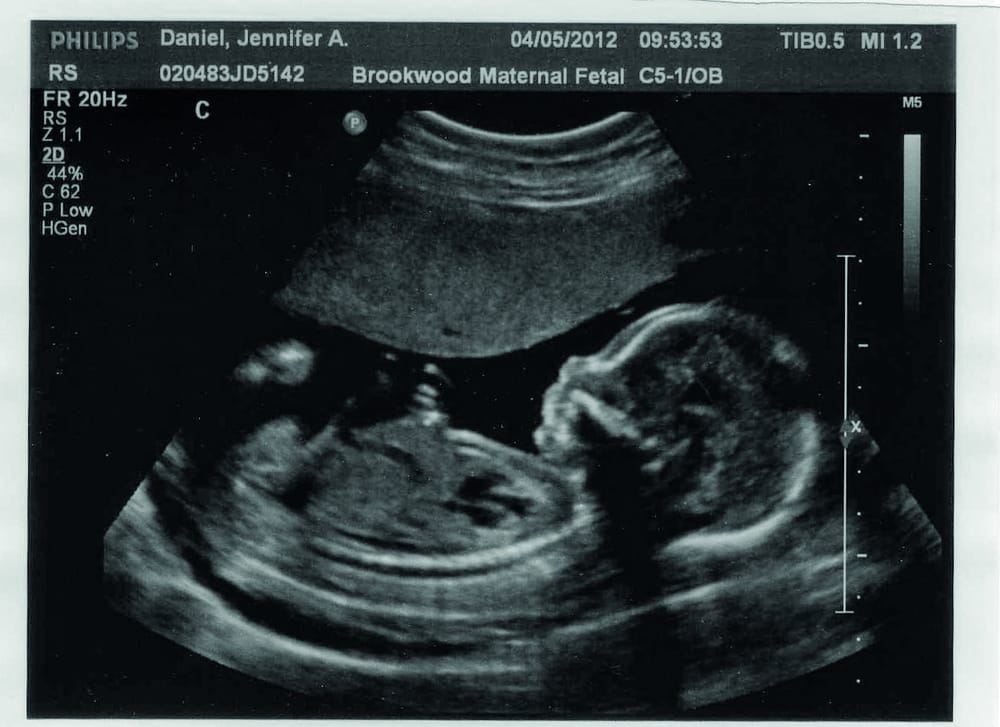Facing difficult decisions in medicine
Lauren Ratcliffe reports on a trail revealing the most effective pre-natal monitoring technique

During some pregnancies, abnormal blood flow from the placenta can deprive the foetus of sufficient oxygen and nutrients to grow to its full potential. This condition is known as foetal growth restriction and affects up to 8% of all pregnancies, a total of 60,000 babies per year in Europe and the USA. The condition is associated with an increased risk of stillborn birth, neonatal death and neurological and cardiovascular disorders later in life. When diagnosed, doctors sometimes decide to deliver these babies early, before the lack of oxygen and increased acidity becomes too damaging. However, this can be a tricky decision to make and involves balancing the risks of keeping the baby in a poor womb environment with the increased risk of morta that’s associated with premature births.
Currently, there is no consensus for when to trigger the delivery in mothers of babies with foetal growth restriction and no best form of monitoring to inform this decision. The Trial of Randomised Umbilical and Foetal Flow in Europe (TRUFFLE) aimed to help clarify this decision by investigating which of the current monitoring methods are most effective in reducing pre and post-natal problems associated with foetal growth restriction.
Women at 26-32 weeks into pregnancy who had been diagnosed with foetal growth restriction were randomly allocated to one of three different monitoring methods currently used in obstetrics. either:
Cardiotocography - this is the most commonly used method of foetal surveillance and monitors the variation in the foetal heart rate.
Early ductus venosus changes - this uses ultrasound to monitor the resistance in blood flow within the ductus venosus, a small vessel below the fetus’ heart, and gives an indication of oxygen shortage.
Late ductus venosus changes - this also uses ultrasound to monitor variability in the waveform of the blood flow in the ductus venosus and indicates abnormalities in the foetus’ heart contractions.
The decision on when to deliver the baby was based on the output of the monitoring technique allocated. They then recorded the rate of survival both before and after birth and followed the surviving babies for two years after to determine how many developed neurological disorders such as cerebral palsy or neurosensory impairment. They also carried out a cognitive assessment with a standardised scale of infant development known as the Bayley III score, with a score of less than 85 suggestive of problems with neurodevelopment.
Lead author Christoph Lees, from the Department of Surgery and Cancer at Imperial College London, commented about the study, “It is the first prospective randomised study to compare different monitoring and management strategies in fetal growth restriction. Fetal growth restriction is a major problem in perinatal medicine and also a major cause of neonatal morbidity with babies spending many weeks or months on neonatal units”.
The findings of the study, carried out across 20 European specialist centres, indicated that the late ductus venosus changes monitoring technique was three times more effective in reducing the chances of neurodevelopmental problems two years after birth. Of all babies that survived 95% of those that were delivered based on the late ductus venosus changes did not encounter neurodevelopmental problems. Whereas 85% of babies delivered according to cardiotocography did and 91% of those monitored on the basis of early ductus venosus changes. However, there were no significant differences in neonatal survival rates between the different monitoring techniques.
“It was a complex monitoring protocol, which is difficult to put into action throughout centres in many different countries. But what was good is that so many centres embraced the study so enthusiastically. Also, the study was largely non-funded, which is difficult to do in today’s environment,” said Dr Lees, when I asked about any challenges him and his team had faced.
There are current no effective treatments for pregnant women diagnosed with fetal growth restriction. “We are working on potential pharmaco-therapies that involve vasodilation and improving placental circulation,” Dr Lees elucidates. However, what was clear from the study is that the outlook in early onset growth restriction is much better than previously imagined, whatever monitoring strategy is followed
“This type of research isn’t a quick fix and requires years of hard work. The idea started off in a bar in a hotel in Turin with professors Gerry Visser and Tullia Todros in 2001 and rapidly became an international group effort. I have co-ordinated all the meetings-it’s been hard work but great fun and I am enormously indebted to my collaborators many of whom have become very good friends. And of course to the women who took part: we have at least in part with their help at a very sensitive time answered a question that many thought we could never answer,” Dr Lees explains.
The researchers are planning on the ‘TRUFFLE 2’ study on women diagnosed with foetal growth restriction at a later time in pregnancy (32 to 36 weeds). Dr Lees will also be writing a textbook on foetal growth restriction with the TRUFFLE authors. The trial was published in The Lancet the 5th March. DOI:10.1016/S0140-6736(14)62049-3









